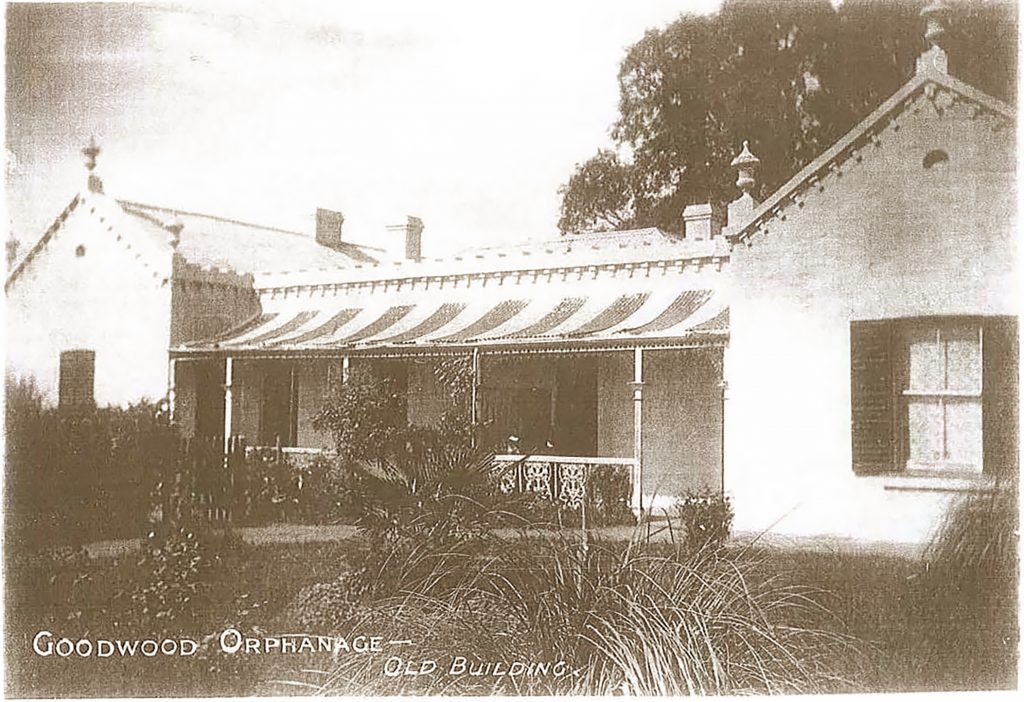
The Josephites’ work with orphans in South Australia began in January 1868.
This occurred when they took charge of the girls from St Vincent de Paul’s Orphanage at Walkerville, Adelaide SA. This institution had initially been established in August 1866 as a home for orphaned and destitute Catholic children and was being supervised by a Board of Management comprising several leading Catholic priests and laymen. The Board had rented a large house at Walkerville with accommodation for thirty children and, as there were no religious sisters in the diocese at the time, had employed a lay matron to supervise it. [1]
Its beginnings were small but those concerned were happy that the orphanage was filling a need in the Catholic community.
Then a dramatic change occurred. The government put pressure on the Board to accept the Catholics from among the hundred or so children in the State Orphanage at Brighton. This institution was overcrowded and in a bad state of disrepair. Its water supply was inadequate and there was not enough clothing or bed linen to go around.
The government and the Chairman of the Destitute Board were desperate, especially when a report describing conditions at the home was published in the local daily newspaper, The Register. The ensuing public outcry roused them to action and the Chief Secretary decided to transfer the thirty or so Catholic children from there to St Vincent de Paul’s. He even went so far as to offer a grant of five shillings a week for each child as an incentive. Arrangements were quickly finalised, and, on 16 March 1867, nineteen orphans moved to Walkerville. Seventeen more arrived on 4 April and another two in July, making thirty-eight new admissions within four months. [2]
The Catholic Board realised the urgency of the situation and received the Brighton children willingly. However, it now faced the serious problem of having to provide for the newcomers out of its meagre resources. The Catholic people responded generously to an urgent appeal and the Board was able to purchase bed linen, clothing and other necessities for the children. On 2 May 1867, the home was gazetted as an Industrial School under the Destitute Persons’ Relief Act of 1866, and the government honoured its promise of aid. [3] Thus, a crisis was averted, and the work continued.
The cramped conditions at Walkerville worried Catholic Board members who looked for ways of relieving the situation. Since most of the children were too young to go out to service or apprenticeships, they unwillingly adopted the interim measure of refusing admission to any destitute child with a surviving parent. Then, in September 1867, the Board launched an appeal to raise funds for a new building to accommodate the extra children. The expected cost of this building was in excess of 2500 pounds and the diocese did not have that kind of money. Consequently, in December, the Board undertook to secure another suitable house for rent and to open a branch orphanage as soon as possible. [4]
Within a month, it had taken out a lease on a building known as Boston Cottages, in King William Street South. As soon as the lease was secured, its members approached the Sisters of St Joseph, who were supervising the Refuge, and asked them to superintend the new institution as well. At the time, there were only ten sisters and they were fully occupied in the schools and with the Refuge. Hence, the initial arrangement between them and the Board was that they should supervise the institution in the same way as they did the Refuge, while lay staff lived in on a permanent basis. As soon as matters were finalised, the thirty or so girls from Walkerville were transferred to the Branch Orphanage in the city and thus began the long association of the Sisters of St Joseph with the orphans and destitute children of South Australia. [5]
Suzanne Ryan
CentreWest Archivist
Source: Extract taken from Think of the Ravens: The Sisters of St Joseph in Social Welfare; Marie Therese Foale rsj; ch.4, pp.17 – 18. Published by Sisters of St Joseph of the Sacred Heart (SA) Inc. May 2001
Footnotes:
[1] Southern Cross and Catholic Herald (SCHH), 20 Sept 1867. Adelaide Observer, 20 August 1866
[2]The Register, 14 March 1867
[3] SCCH 2O Dec 1867; SA Government Gazette, 2 May 1867
[4] SCCH 20 Sept 1867; Observer Supplement 24 August 1867
[5] SCCH, 20 January 1868
